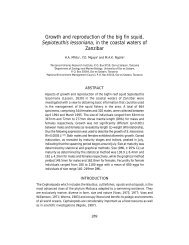gpa_east_africa_case.. - GRID Africa GeoPortal - UNEP
gpa_east_africa_case.. - GRID Africa GeoPortal - UNEP
gpa_east_africa_case.. - GRID Africa GeoPortal - UNEP
You also want an ePaper? Increase the reach of your titles
YUMPU automatically turns print PDFs into web optimized ePapers that Google loves.
Annex IRegional OverviewThe Western Indian Ocean Region comprises the coastal States of Kenya, Mozambique,Somalia, South <strong>Africa</strong>, and Tanzania and the island States of Comoros, Madagascar,Mauritius, Reunion, and Seychelles. The coastal States are among the world's poorestcountries with annual per capita gross national product of less than $ 1,000, crippled by rapidurbanisation, poverty, structural-adjustment problems and over-dependence on informalsector activities. The coastal zone of the region between Somalia and Mozambique, taking upabout 12% of the land area, is home to 25 million people accounting for about 20% of theregion's population. Population trends indicate that in the major coastal cities of Mombasa,Dar es Salaam and Maputo the population will double in about 25 years.The coastal and marine environment of Eastern <strong>Africa</strong>n presents great ecological diversityendowed with coral reefs, sea grass meadows, lagoons, mangroves and beaches ofconsiderable natural beauty. Of the 38 types of designated marine and coastal habitats, atl<strong>east</strong> more than 12 types of habitats are found within each country of the region. There is ahigh degree of ecological interdependence among ecosystems; the conditions that supportthe coastal ecosystem are influenced by conditions in adjacent ecosystems. Typically,mangrove ecosystems form a nursery ground for a variety of fish, some of which mature incoral reefs and sea grass meadows; nutrient, sediment and organic matter interchangebetween the ecosystems. These ecosystems are important repository of biodiversity, bothflora and fauna. Based on 52 tropical inshore fishes, it has been found that endemism ofspecies in the region is 22% compared to 13% for the Red Sea and 6% for the Eastern IndianOcean. The Region includes five of the world’s seven coastal turtle nest and more than 20cetacean species. The coastal ecology supports productive resources used in economicactivities providing food and income to the coastal population.Coral reefs are found in all countries, with Mozambique, Madagascar and Tanzania havingthe largest area coverage. The economies of all the countries benefit from reef fisheries, aswell as reef-related tourism. Artisan fisheries typically account for more than 95 % of the totalmarine catch, these activities being mostly in reef, sea grass and associated platformenvironments thus providing employment and income to most coastal communities. Coralgrows in clear water and is extremely sensitive to pollution, whether due to chemicalcontaminants or suspended sediments.Mangrove forests are biologically rich ecosystems and an important form of coastalvegetation. Their extensive root systems stabilise sediments, provide shelter for an array ofbirds, marine animals, and commercially important fish and crustaceans. The decompositionof mangrove litter provides a source of food for both mangroves and shrimp communities inadjacent habitats. While molluscs, crabs, fishes, and shrimps caught from the mangroveecosystems are direct sources of food and income, mangroves are also the primary source ofconstruction timber, fire wood and charcoal. Consequently, mangroves are under increasingpressure from expanding coastal population. Mozambique has the largest total area ofmangrove in the region with 396,080 hectares. Madagascar and Tanzania have 327,000 and98,157 respectively (<strong>UNEP</strong>, No. 167, 1998).Environmental degradation is a major threat not only to ecological diversity itself but also toproduction and the livelihood sources on which coastal communities depend. The underlyingcauses of environmental degradation are associated with rapid coastal urbanisation, sprawl ofunplanned peri-urban settlements and expansion of trading activities that widen the gapbetween the expanding needs for sanitation and wastewater infrastructure and the limitedfinancial resources and institutional capacities to match the scale of the demand.Urbanization Trends: percentage of urban population 1960,1994 and 2000Country 1960 1994 2000Kenya 7 27 32Tanzania 5 24 28Mozambique 4 33 41Final Draft Report – Cost Benefit Case StudiesGPA Strategic Action Plan on Sewage, October, 200064


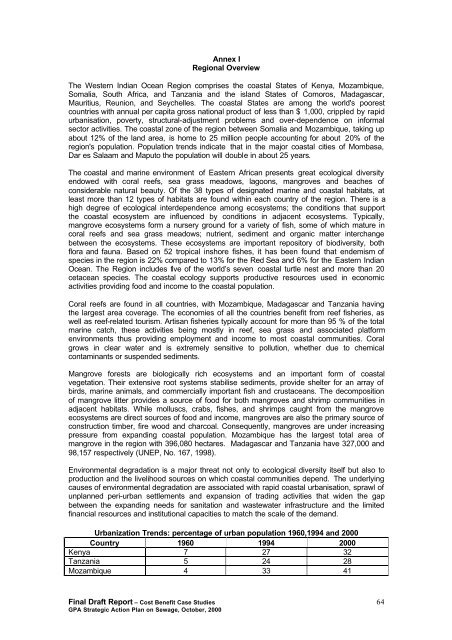
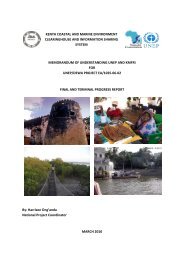
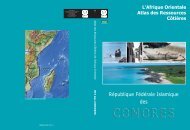
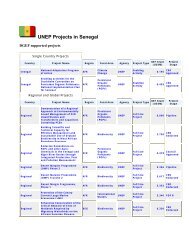

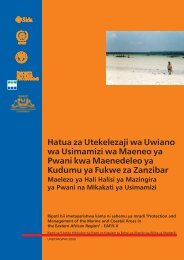
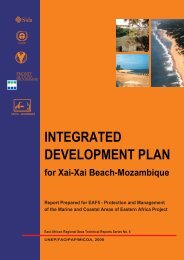
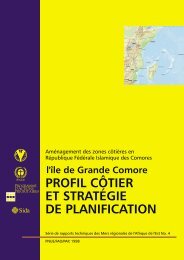
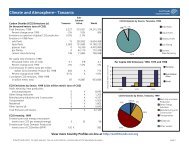

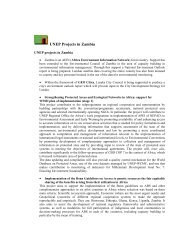
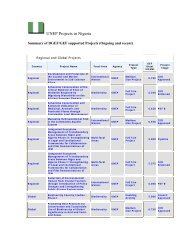
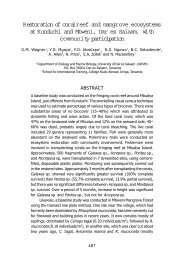
![Please Click to download [English] - GRID Africa GeoPortal - UNEP](https://img.yumpu.com/30633391/1/184x260/please-click-to-download-english-grid-africa-geoportal-unep.jpg?quality=85)
